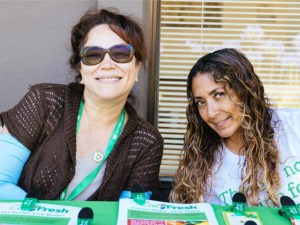 Every other month, Alex is a steering committee member and also meets with the Immigrants’ Rights and Justice Work Group of Marin. She is joined by representatives from nearly two dozen other community organizations.
Every other month, Alex is a steering committee member and also meets with the Immigrants’ Rights and Justice Work Group of Marin. She is joined by representatives from nearly two dozen other community organizations.
As the Food Bank’s Senior Program Manager for CalFresh, Alex has seen firsthand the struggles some immigrant communities face regarding food insecurity. 45% of undocumented immigrants in California are food insecure, according to a report by Food4AllCoalition.
She understands how misconceptions and policies like the Public Charge rules, which deny lawful permanent residency to those who rely on public benefits, can prevent immigrant families from accessing crucial services. While CalFresh isn’t a public charge program, many still won’t apply out of fear. By partnering with fellow organizations in Marin, the Food Bank is able to be part of holistically serving our community and addressing the challenges they face.
We spoke with Alex to learn more about what the Committee is currently focusing on and what their plans are to further reach and support immigrant communities in Marin.
Food Bank: Can you tell us a little more about the Immigrant Rights and Justice Work Group and how it started?
Alex: The Immigrant Rights and Justice Work Group started as a Public Charge Working Group at first. We started to see lack of enrollment in public benefits, such as MediCal, CalFresh, and WIC, rental assistance, and this was due to the Public Charge fears during the Trump administration. So, we started to meet to talk about the challenges and what we were hearing on the ground. We also shared data and started to talk about strategies to support and undo the harm of the Public Charge rule towards the community.
Today, we’re still working with many nonprofits and organizations that represent the diversity of Marin County that work with older adults, children, families, the unhoused community, etc. We [Food Bank] were one of the initial partners that began raising the concern about access to CalFresh.
FB: What inspired you to do this work?
What really inspires me about this work is being able to lead by the voices from lived experience on the barriers to access and work with partners because I’m able to do my work in a multidisciplinary way and address the root causes of hunger. I’m able to listen and understand the challenges that organizations face. I get to hear about how they’re providing resources like rental assistance to clients that are facing high rent and costs while alleviating barriers to fair wages.
To me, food access brings an opening to the world of what more we can be doing. It’s such an ongoing opportunity for me to constantly learn and understand the community. The collective, the partnerships, the on-the-ground work, and overall motivation to help support clients in a holistic way are what inspires me.
FB: What is the Working Group currently focusing on?
We’re currently focusing on these priority areas:
- Ensure access to benefits and services, including disaster-related benefits
- Advance equitable recovery from COVID-19
- Implement federal immigration relief policies
- Reduce educational disparities and inequities
FB: Are there any specific challenges immigrant communities in Marin face?
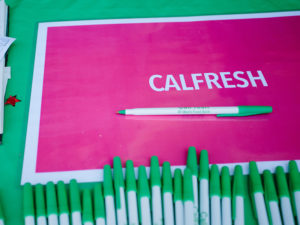
Alex: Most of the immigrant community in Marin County is from Guatemala, Mexico and El Salvador. So, one challenge is they must navigate languages since not everyone speaks Spanish and there aren’t community interpreters and materials for the Mayan Indigenous community.
The other main challenge overall for the immigrant community is fear in advocating for their rights. The immigrant community feels like they have no voice due to racism against immigration. We also saw that with the pandemic and everything that was happening there were challenges on access to housing, fair wages, education, immigration status, and really understanding the Public Charge rule. So that’s why we’re working with organizations that represent the diversity of Marin County that also work with seniors, children, families, the unhoused, etc.
I’ve also seen more community members getting involved in community meetings and initiatives to talk about the challenges, find ways to get more involved and co-create solutions.
FB: What are you most proud of accomplishing within the Work Group?
I would say that the thing that I’m proud of is just the immediate support everyone provides as challenges occur. I’ve been able to share how we’re able to message around providing food for all in our pantry network and making it a safe space for all.
We also collaborate with First 5 to host forums. Every year they have several educational forums and educate on policy, bring in policymakers, along with Marin Community Foundation and Health and Human Services.
FB: Is there anything else you’d like to share?
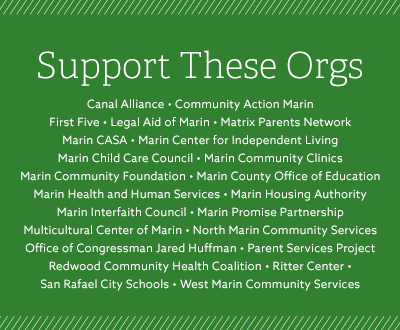 This partnership is crucial. We’re all working in specific areas and in many ways , which can sometimes make us work in a silo. But by broadening and expanding partnerships, as we do in the IRJ Work Group we can do so much more. As a trusted member we can share resources of other organizations, which gives immigrants more ease while they get back on their feet, and that to me is collective impact towards sustainability.
This partnership is crucial. We’re all working in specific areas and in many ways , which can sometimes make us work in a silo. But by broadening and expanding partnerships, as we do in the IRJ Work Group we can do so much more. As a trusted member we can share resources of other organizations, which gives immigrants more ease while they get back on their feet, and that to me is collective impact towards sustainability.
The gratitude that comes from the community is so powerful. They pray for our families and us and give us blessings from their heart. And that to me is priceless.
"To me, food access brings an opening to the world of what more we can be doing. It's such an ongoing opportunity for me to constantly learn and understand the community." — Alex Danino
The Immigrant Rights and Justice Work Group includes the following organizations:



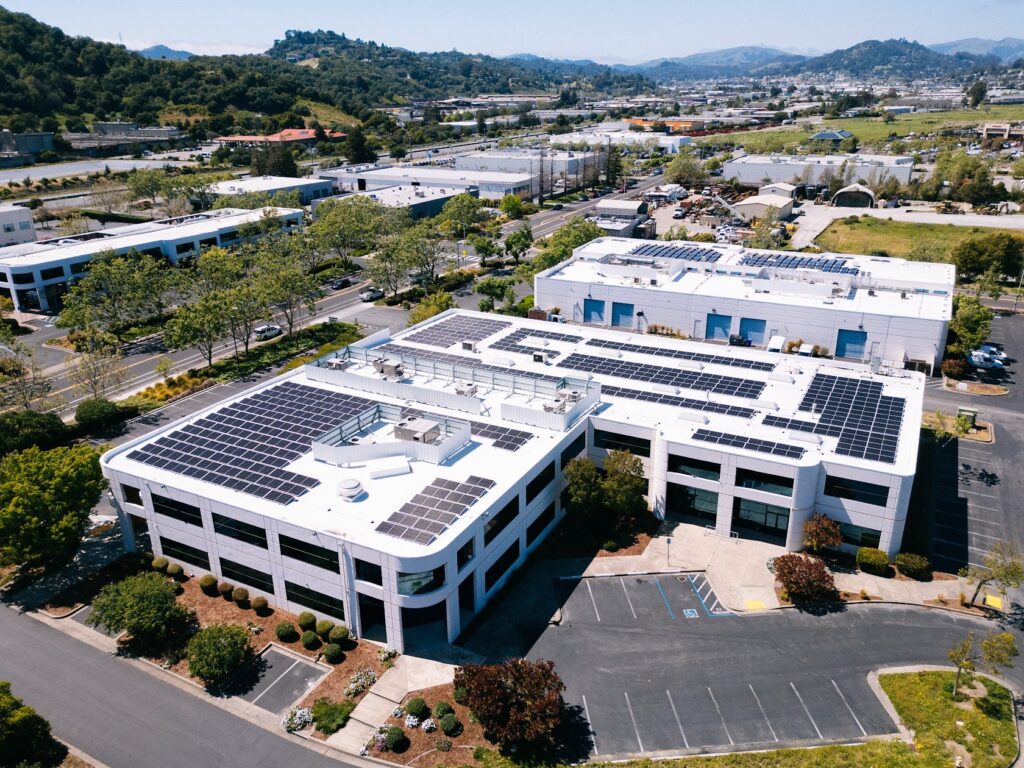 At the Food Bank, we know that access to healthy nutritious food is deeply connected to the climate crisis. If we want to build a food-secure future, we have to protect the environment we all depend on to grow the fruits, vegetables, and grains that nourish our communities. That’s why making big investments in sustainability is so important for our Food Bank.
At the Food Bank, we know that access to healthy nutritious food is deeply connected to the climate crisis. If we want to build a food-secure future, we have to protect the environment we all depend on to grow the fruits, vegetables, and grains that nourish our communities. That’s why making big investments in sustainability is so important for our Food Bank.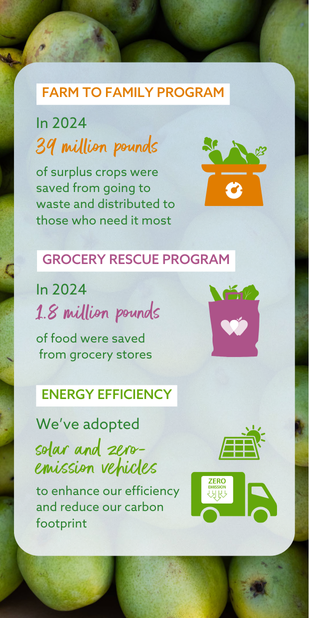
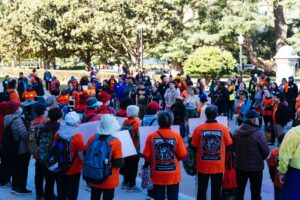 On April 30, our Policy and Advocacy team gathered in-person with the California Hunger Action Coalition (CHAC) in Sacramento to raise their voices for Hunger Action Day! Hunger Action Day is the single largest anti-hunger advocacy day in California, bringing advocates from across the state to the State Capitol to speak face-to-face with our policymakers.
On April 30, our Policy and Advocacy team gathered in-person with the California Hunger Action Coalition (CHAC) in Sacramento to raise their voices for Hunger Action Day! Hunger Action Day is the single largest anti-hunger advocacy day in California, bringing advocates from across the state to the State Capitol to speak face-to-face with our policymakers.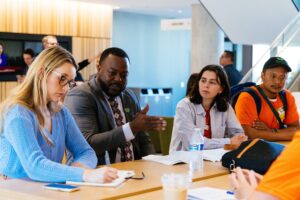
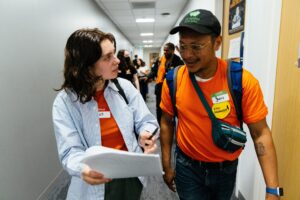 Reflecting on a jam-packed day of collaboration, Food Bank staff came away feeling energized to continue pushing for impactful, equitable policy.
Reflecting on a jam-packed day of collaboration, Food Bank staff came away feeling energized to continue pushing for impactful, equitable policy.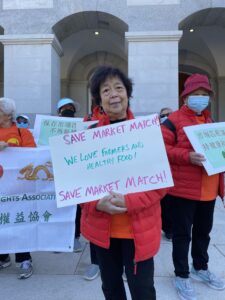 TNDC’s Tenderloin Chinese Rights Association.
TNDC’s Tenderloin Chinese Rights Association. 
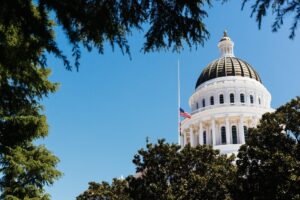
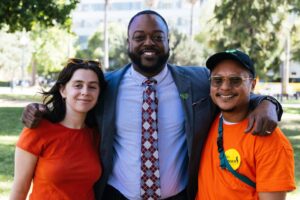

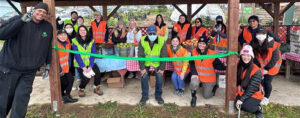 As partners reopen, “we’re reaching out to neighbors [currently enrolled in Food Bank-run pantries] to let them know they have a choice to return to their neighborhood pantry,” said Tina Gonzales, Director of Community Partnerships at the Food Bank. “When a pantry reopens, it’s exciting for people who used to go there – that’s their community.” Plus, pantries run by our partners will help us scale back our large Food Bank-run sites (which opened during the pandemic to meet the increased need, and are nearly all at capacity), making them smaller and more manageable.
As partners reopen, “we’re reaching out to neighbors [currently enrolled in Food Bank-run pantries] to let them know they have a choice to return to their neighborhood pantry,” said Tina Gonzales, Director of Community Partnerships at the Food Bank. “When a pantry reopens, it’s exciting for people who used to go there – that’s their community.” Plus, pantries run by our partners will help us scale back our large Food Bank-run sites (which opened during the pandemic to meet the increased need, and are nearly all at capacity), making them smaller and more manageable. 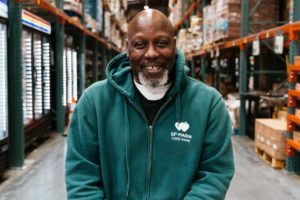 Step onto the shop floor at the Pennsylvania Warehouse and you’ll be greeted by racks filled with just about every item under the sun: fresh fruits and vegetables (of course), canned beans and proteins, fresh breads and pastries, eggs, frozen proteins like chicken breasts, and assorted dry, fresh, and frozen grocery items from supermarkets all over San Francisco.
Step onto the shop floor at the Pennsylvania Warehouse and you’ll be greeted by racks filled with just about every item under the sun: fresh fruits and vegetables (of course), canned beans and proteins, fresh breads and pastries, eggs, frozen proteins like chicken breasts, and assorted dry, fresh, and frozen grocery items from supermarkets all over San Francisco. 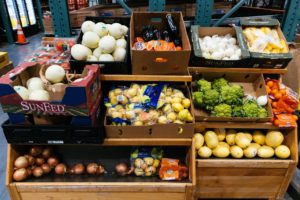 Henry says that lately, “demand is very high, with a limited supply,” because of inflation and supply chain issues, driving home the need for continued support from our community as we strive to keep our shop floor racks full for our neighbors and partners.
Henry says that lately, “demand is very high, with a limited supply,” because of inflation and supply chain issues, driving home the need for continued support from our community as we strive to keep our shop floor racks full for our neighbors and partners. 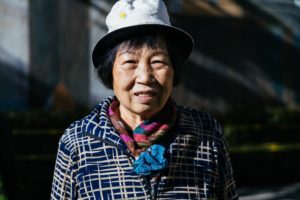 We met Hui Yu at her neighborhood pantry in the SOMA district, where she volunteers regularly and picks up groceries for her and her husband as well. Prior to retirement, Hui Yu worked in a restaurant kitchen, so she’s no stranger to feeding others. Now, she often cooks meals for friends in her senior living facility who can’t make it out to the pantry. Poultry was at the top of Hui Yu’s list as a holiday main: “
We met Hui Yu at her neighborhood pantry in the SOMA district, where she volunteers regularly and picks up groceries for her and her husband as well. Prior to retirement, Hui Yu worked in a restaurant kitchen, so she’s no stranger to feeding others. Now, she often cooks meals for friends in her senior living facility who can’t make it out to the pantry. Poultry was at the top of Hui Yu’s list as a holiday main: “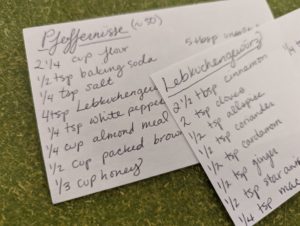 cookies)
cookies)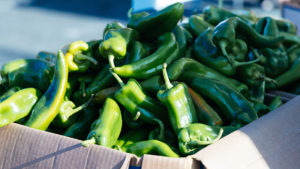 basis, traditional recipes that comes down from your family. My favorite recipe that was passed down to me is my mother’s okra.” At first thoughtfully pondering what else makes up her usual holiday table, Barbara began quickly listing other favorites: “
basis, traditional recipes that comes down from your family. My favorite recipe that was passed down to me is my mother’s okra.” At first thoughtfully pondering what else makes up her usual holiday table, Barbara began quickly listing other favorites: “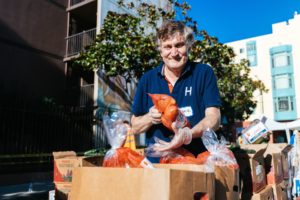 neighborhood pantry. He’s a military retiree and a volunteer at his local pantry, where he also picks up groceries for him and his wife. For his family, the holidays are about the joining of different traditions. “I have a traditional turkey dinner, where I usually go up to my sister’s house for Thanksgiving. And then I host a turkey dinner for my wife’s family. My wife’s Chinese, so we tend to do Chinese vegetables, mashed potatoes and cranberries [on the side].”
neighborhood pantry. He’s a military retiree and a volunteer at his local pantry, where he also picks up groceries for him and his wife. For his family, the holidays are about the joining of different traditions. “I have a traditional turkey dinner, where I usually go up to my sister’s house for Thanksgiving. And then I host a turkey dinner for my wife’s family. My wife’s Chinese, so we tend to do Chinese vegetables, mashed potatoes and cranberries [on the side].”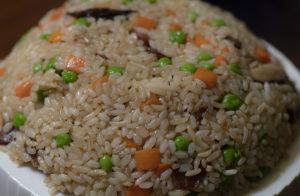 As Program Manager at the Food Bank, Kim is around good food quite a bit! But nothing quite compares to her family recipe for naw mai fan. “This is my mom’s recipe. She learned how to make this from my grandmother, an immigrant from the
As Program Manager at the Food Bank, Kim is around good food quite a bit! But nothing quite compares to her family recipe for naw mai fan. “This is my mom’s recipe. She learned how to make this from my grandmother, an immigrant from the 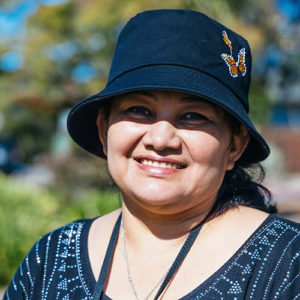 Sharing is caring! María is a mom, volunteer, and pantry participant in San Rafael. She told us that her family embraces potlucks during the holidays, but also for camping trips and other gatherings throughout the year.
Sharing is caring! María is a mom, volunteer, and pantry participant in San Rafael. She told us that her family embraces potlucks during the holidays, but also for camping trips and other gatherings throughout the year. 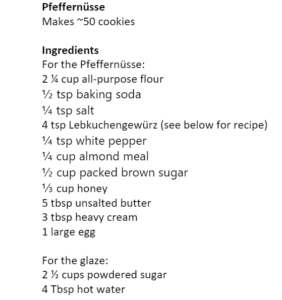
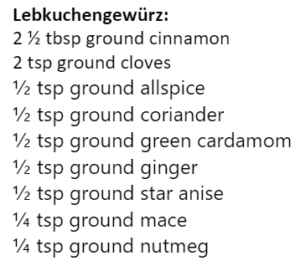
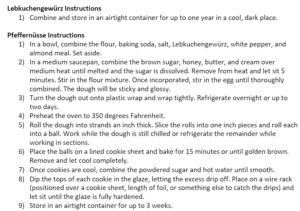
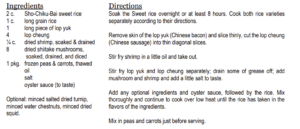
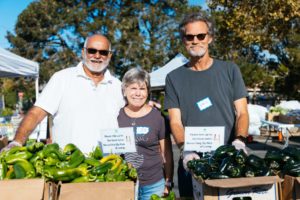 COVID Pantry Pivots
COVID Pantry Pivots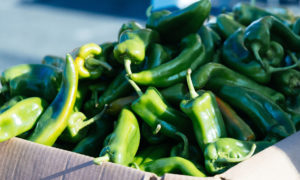
 Every other month, Alex is a steering committee member and also meets with the
Every other month, Alex is a steering committee member and also meets with the 
 This partnership is crucial. We’re all working in specific areas and in many ways , which can sometimes make us work in a silo. But by broadening and expanding partnerships, as we do in the IRJ Work Group we can do so much more. As a trusted member we can share resources of other organizations, which gives immigrants more ease while they get back on their feet, and that to me is collective impact towards sustainability.
This partnership is crucial. We’re all working in specific areas and in many ways , which can sometimes make us work in a silo. But by broadening and expanding partnerships, as we do in the IRJ Work Group we can do so much more. As a trusted member we can share resources of other organizations, which gives immigrants more ease while they get back on their feet, and that to me is collective impact towards sustainability.
Share